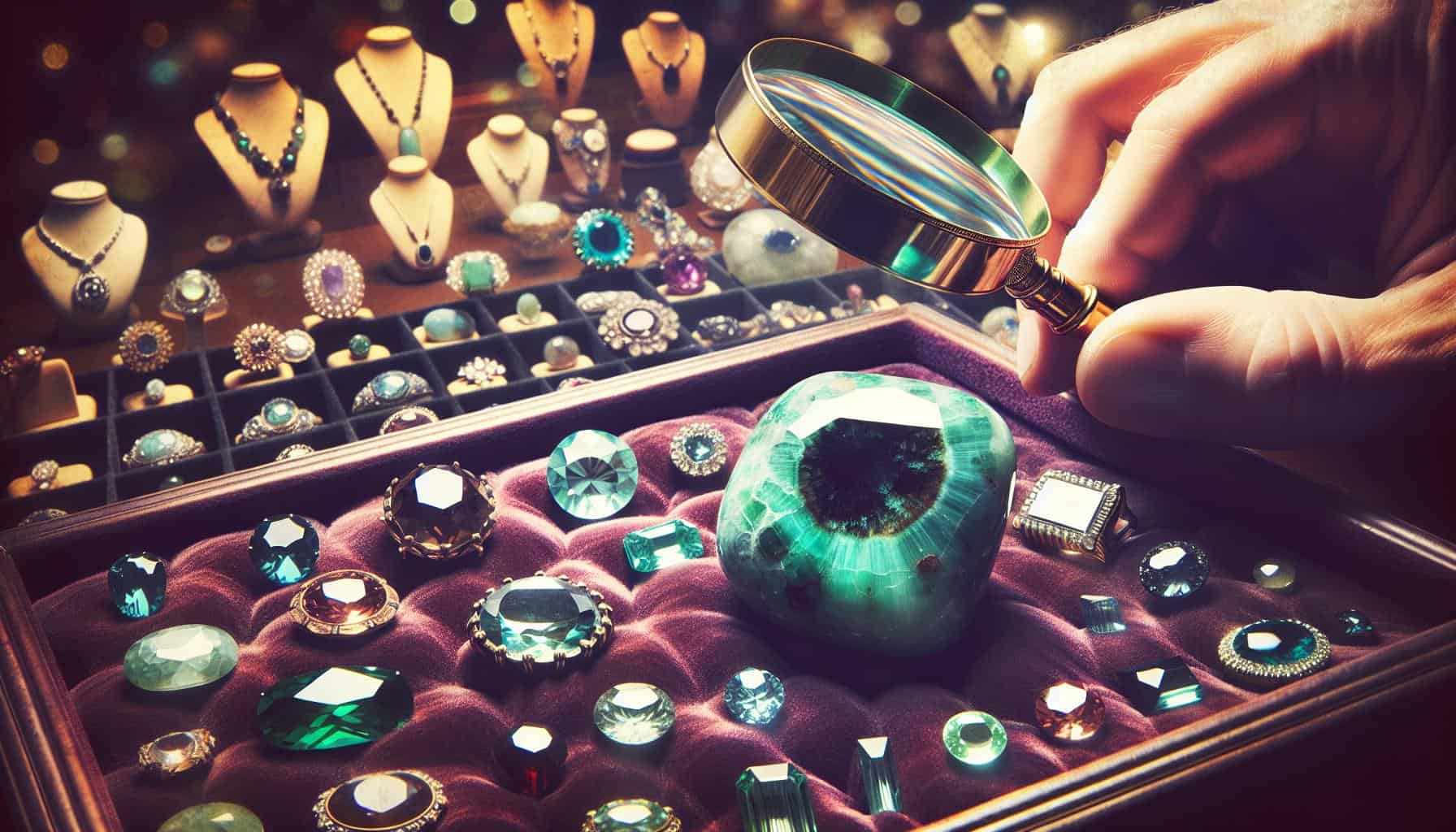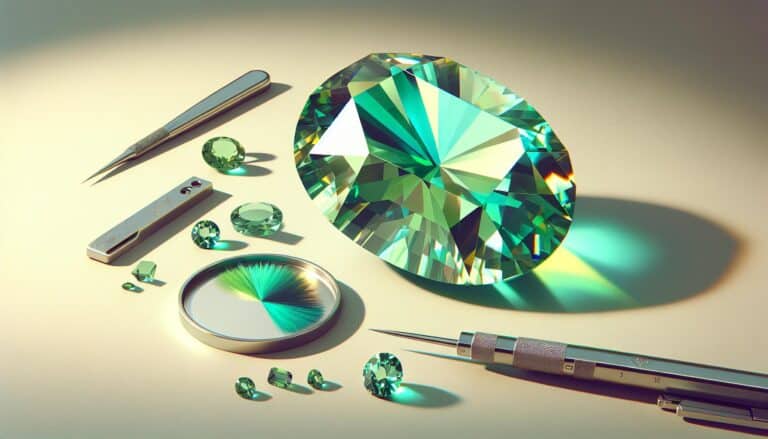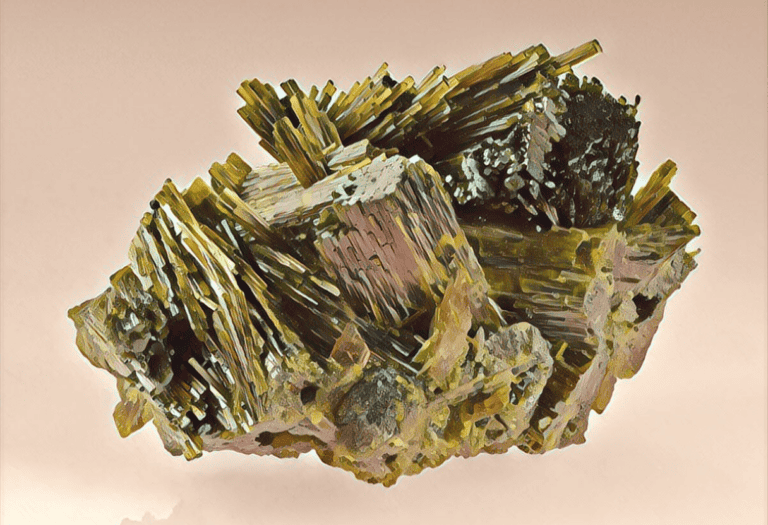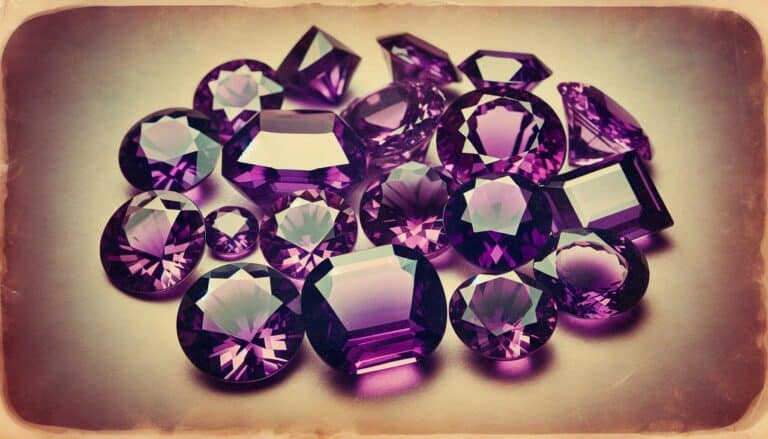Ever wondered about the value of that mesmerizing green stone you’ve seen in jewelry stores?
That’s amazonite, a gemstone that’s as intriguing as its name. Its worth isn’t just in its beauty but also in its rarity and the demand for it in the market.
Understanding amazonite’s value can be a bit like unraveling a mystery. Factors like color, clarity, cut, and size play significant roles in determining its price.
Let’s dive into what makes amazonite a gem worth owning and how its value is assessed in the ever-changing gem market.
Amazonite’s value is influenced by color, clarity, cut, and availability. Prized for its turquoise to green hues, high-quality amazonite is rare and commands higher prices. Factors like intense color saturation, few inclusions, and expert cut increase its worth. Limited availability due to specific mining locations also affects its market value.
What Is Amazonite?
Amazonite, often associated with the lush foliage of the Amazon rainforest, is a captivating gemstone that grabs your eye with its tranquil turquoise to green hues. Hailing from the family of microcline feldspar, this gemstone offers more than just visual allure; it’s known for its balancing energy and harmony.
Characteristics of Amazonite
The stone’s standout color palette can sweep through various shades, from bright green to blue-green. The color is due to the presence of lead and water within its crystalline structure. Turning the stone in the light, you’ll notice a telltale sheen known as a ‘schiller effect,’ caused by the interplay of light with minute inclusions within the stone.
Amazonite comes with a Mohs hardness rating of about 6 to 6.5, which makes it relatively durable but also prone to scratching if not handled with care. Jewelers often set amazonite in pendants or earrings rather than rings to minimize wear and tear.
Sourcing and Authenticity
You’ll find genuine amazonite in various locations worldwide, with notable deposits in Colorado, Virginia, Russia, and Brazil. Its authenticity can be verified through professional appraisal, which assesses those aforementioned qualities such as color and clarity. Be wary of imitations – some stones are treated with dyes or other enhancements to mimic the natural beauty of amazonite.
Mining and environmental regulations can influence the rarity and, subsequently, the value of this gemstone. Because of this, it’s crucial to source your amazonite from reputable dealers committed to ethical mining practices.
Amazonite’s worth goes beyond monetary value; it carries centuries of cultural significance, being adored by ancient civilizations for both ornamentation and symbolic purposes. As a collector or a jewelry enthusiast, understanding the gemstone’s background enriches your appreciation for each unique piece you encounter.
Amazonite Prices: Factors That Affect Value
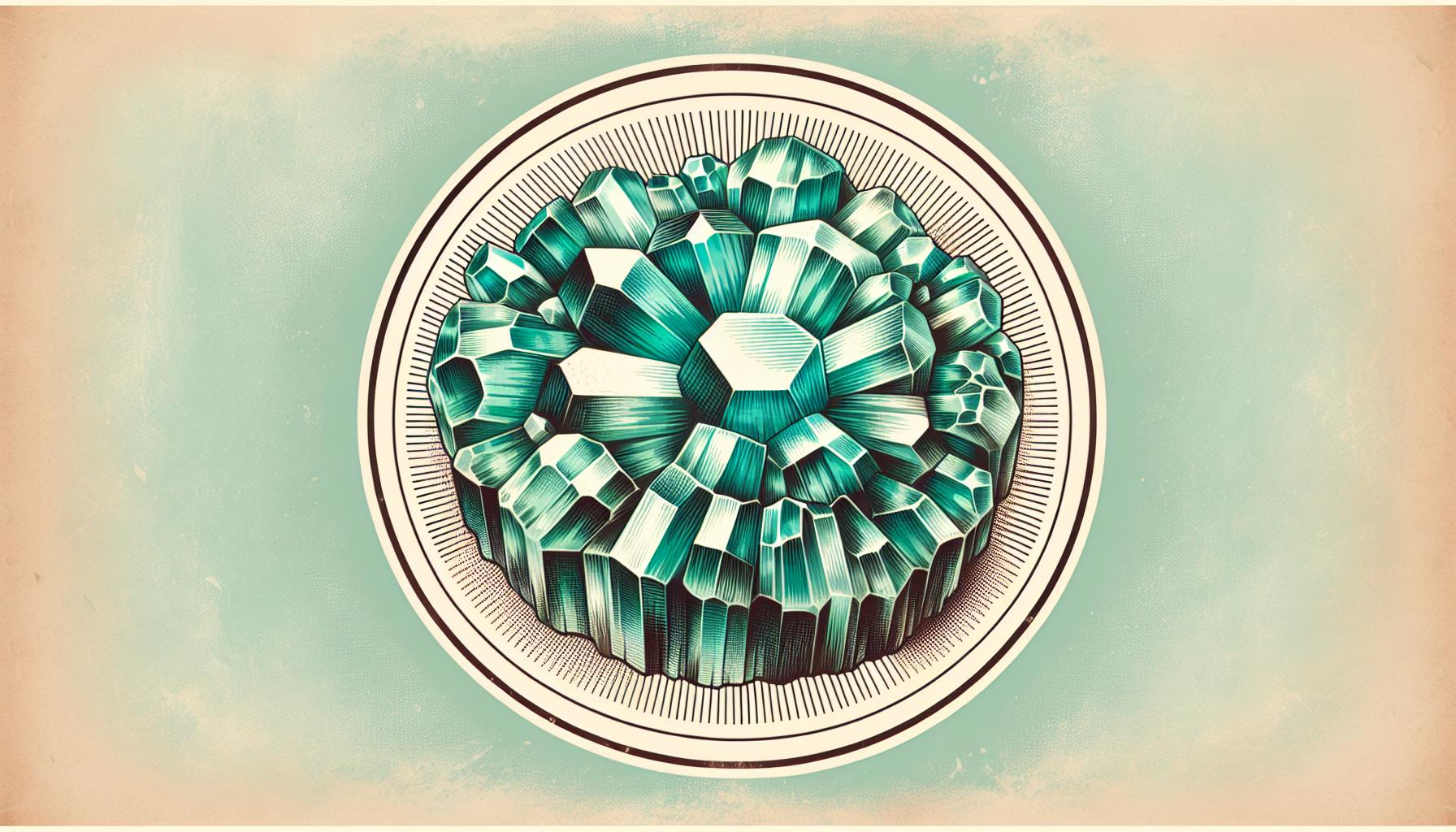
When you’re considering the purchase of amazonite, it’s crucial to understand the variables that contribute to its value. Just like any other gemstone, several factors come into play, impacting the overall worth of amazonite. As you delve into these aspects, you’ll be better equipped to make informed decisions and appreciate the nuanced beauty of each stone you encounter.
Color, Clarity, and Cut Quality
The allure of amazonite is largely drawn from its vibrant color and the mesmerizing quality of its appearance. As such, color ranks at the top of the list when it comes to factors that affect amazonite’s value. Ideally, you’re looking for stones that exhibit a bright, even turquoise to green hue without overwhelming inclusions that might detract from its clarity.
- Intense, uniform color often commands higher prices.
- Clarity refers to the presence or absence of inclusions within the gemstone. Amazonite with fewer inclusions is rarer and, therefore, more valuable.
- Cut quality also plays a crucial role. A well-executed cut can enhance the stone’s natural beauty, improve its color appearance, and increase its brilliance.
Market Demand and Availability
The law of supply and demand inevitably shapes the market value of amazonite. Despite amazonite not being as widely recognized as some precious stones, it has a dedicated following among gemstone enthusiasts and those drawn to its tranquil appearance.
- Market Demand reflects the current popularity of the gemstone. Increased demand leads to higher prices, especially for high-quality specimens.
- Availability pertains to the rarity of the mineral. While amazonite is sourced from various parts of the world, top-quality stones are less common and will sell for more.
When you’re evaluating amazonite, keep in mind that larger stones can be more expensive not only due to their size but also because maintaining color consistency and clarity becomes more challenging as size increases. Remember that the country of origin can also influence the market, with certain locations producing stones that are highly sought after for their unique characteristics.
Reputable dealers will have their amazonite assessed by professional gemologists, ensuring that you receive a stone that’s worth the investment. It’s not just about owning a piece of amazonite but knowing you have a token of Earth’s naturally occurring artistry that holds its value due to the factors outlined here.
Understanding Amazonite: A Rare Gem
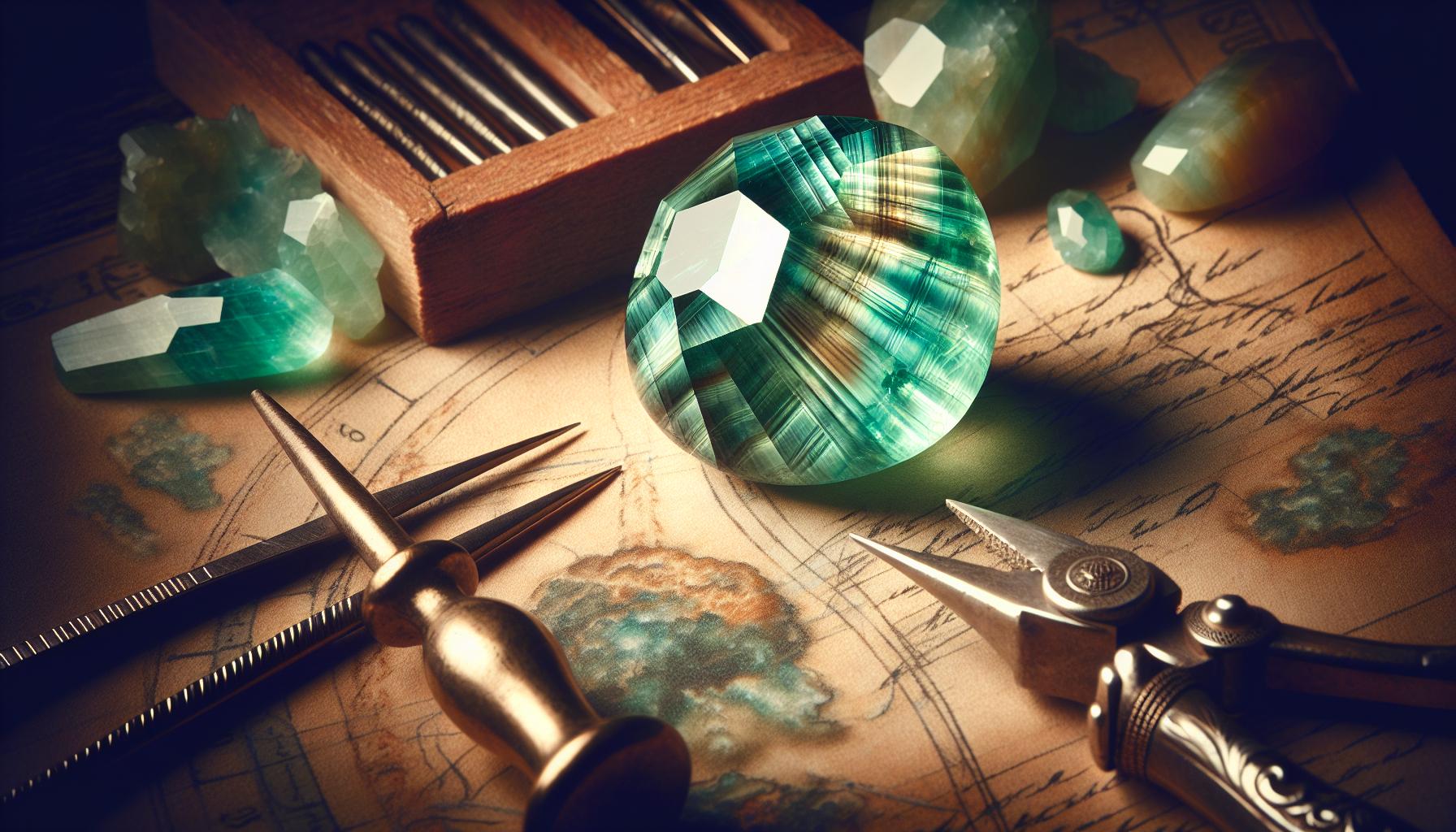
The Rarity of Amazonite
Amazonite isn’t a gem you’ll stumble upon every day. Its scarcity is due to the specific geological conditions needed for its formation, which aren’t common worldwide. Mineralogists say that this gem’s unique green to blue-green color results from lead and water content within the microcline feldspar, its parent material. Not only is its formation a rare occurrence, but amazonite also lacks a widespread distribution. That’s partly why it’s sought after by collectors and gem enthusiasts.
Origins and Characteristics
Amazonite’s origins are as fascinating as the gemstone itself. It Primarily Comes from Two Countries: Russia, in the Ilmensky Mountains, and the United States, mainly Colorado. However, other notable sources include Madagascar, Brazil, and Ethiopia, contributing to the gemstone’s array of colors and patterns. You’ve probably heard of the term “collectors’ items,” and amazonite found in these regions often becomes just that.
The characteristics of amazonite contribute significantly to its allure. Beyond color, the gem often showcases a grid-like pattern known as the “gridiron structure.” This distinctive feature is a result of intersecting albite and orthoclase within the stone. And let’s not forget the Schiller Effect, an optical phenomenon giving amazonite a lustrous, iridescent sheen that catches the eye with every movement.
You should know that the physical properties of amazonite set it apart in durability. Its Mohs hardness rating of 6 to 6.5 means it’s neither the softest nor the hardest gem, striking a balance that allows for versatile use in jewelry. This intermediate hardness also influences the size and shapes into which amazonite can be fashioned, affecting the overall market value. Remember, the larger the carat weight or the more intricate the cut, the higher its valuation may climb. Additionally, inclusions or imperfections can determine whether a piece is more suited for collectors or everyday jewelry pieces.
Amazonite Grading and Valuation
The Grading System for Amazonite
Understanding the grading system for amazonite is crucial when determining its worth. Unlike diamonds, amazonite doesn’t have a universally standardized grading system. However, several factors stand out when professionals assess this gemstone’s quality. The characteristics that influence amazonite’s grade include color, clarity, cut, and carat weight—collectively known as the “Four Cs” in the gemstone industry.
Color is the most significant factor. Amazonite’s value increases with the intensity and vibrancy of its green to blue-green hue. You’ll notice that the most sought-after stones flaunt a uniform and saturated color with no visible zoning. Clarity comes second; more transparent stones without visible inclusions are considered top quality. Regarding cut, well-crafted pieces that enhance the stone’s natural beauty and the Schiller Effect are more valuable. Lastly, the carat weight affects the price, with larger, high-quality specimens fetching higher prices.
When you’re in the market for amazonite, pay attention to these aspects to gauge the stone’s caliber. Keep in mind that each stone is unique, and these evaluation criteria might differ slightly among jewelers and collectors.
Certification and Appraisal
If you’re investing in amazonite, a certification or appraisal from a trusted gemologist adds significant value to your purchase. This document verifies the stone’s natural origin, quality attributes, and is often necessary for insurance purposes. A reputable certificate should provide detailed information about the gemstone, including its dimensions, weight, shape, cut quality, color intensity, and clarity grade.
Make sure the appraiser is a certified professional with credentials from esteemed organizations like the Gemological Institute of America (GIA) or the American Gem Society (AGS). These certifications confirm that the stone has been scrutinized under internationally recognized protocols, ensuring that you’re getting what you pay for.
During the appraisal process, gemologists use specialized instruments to precisely measure the gemstone’s properties. If your amazonite comes with such a certificate, you can trust that its value is backed by scientific analysis and professional integrity. Remember to store your certification safely, as it’s a crucial document that attests to your amazonite’s authenticity and quality.
Current Market Trends in Amazonite Pricing
When you’re trying to determine the value of amazonite, it’s crucial to stay current with the market trends. Prices of amazonite can fluctuate due to various factors such as mining conditions, fashion trends, and collector demand.
Factors Affecting Amazonite Value
- Rarity: As amazonite becomes more difficult to mine, the scarcity factor drives up its price.
- Fashion Trends: Jewelry featuring amazonite can spike in popularity, affecting costs.
- Quality: Higher-grade stones with superior color and clarity command premium prices.
Global Impact on Amazonite Prices
With the majority of amazonite sourced from Russia and the U.S., geopolitical conditions can significantly impact availability and pricing. For instance, trade restrictions may limit the amount of this gemstone entering the market from traditional sources, shifting demand to deposits in other countries.
Price Range Overview
Here’s a quick snapshot of what you might expect to pay for amazonite:
| Quality | Price Range per Carat |
|---|---|
| Low-quality, little color | $1 – $5 |
| Average quality | $5 – $15 |
| High-quality, vibrant color | $15 – $30 |
Remember, prices can exceed these averages for exceptionally high-quality or large pieces of amazonite.
Certification and Its Role
Your investment in amazonite is more secure when you purchase stones that are certified. Certified amazonite often fetches a higher price due to the guarantee of its quality and authenticity.
By keeping these factors in mind, you’ll be better equipped to understand and navigate the nuances of amazonite pricing in today’s market. Whether you’re a collector or someone in search of the perfect piece of jewelry, recognizing these trends helps ensure you make an informed decision. Keep an eye on market shifts, and always verify the quality and certification of your chosen amazonite to match its price with its worth.
The Most Expensive Amazonite
You might wonder what sets apart the most expensive amazonite from the rest. Rarity and quality are the stars of this show. The top-tier amazonite comes with an almost neon turquoise or blue-green color that’s consistent and highly saturated. Luxurious pieces may also exhibit the coveted Schiller Effect, manifesting a mesmerizing luster.
Ranging from collectors’ specimens to exquisite jewelry, the price tag can skyrocket for those amazonite pieces that hit the sweet spot of both perfection in appearance and size. Enthusiasts and collectors are willing to pay premium prices for stones that encapsulate the essence of amazonite’s beauty without any visible inclusions or imperfections.
To give you an idea of the numbers, focus on the stark difference between average specimens and these exceptional finds. Gem-quality amazonite can fetch anywhere from a few dollars to over a hundred dollars per carat. But when you’re looking at the creme de la creme, prices can climb significantly higher. Particularly for large, fine-quality specimens suitable for statement pieces, they can command prices in the thousands.
| Quality | Price Range Per Carat |
|---|---|
| Average Amazonite | $1 – $50 |
| Gem-Quality Amazonite | $50 – $100 |
| Top-Tier Amazonite | $100 and above |
Remember, the context of the amazonite greatly influences its value. A flawless amazonite gemstone set in a designer piece of jewelry, for instance, has its worth propelled not just by the gemstone’s quality but also by the artistry and brand it’s associated with.
Demand plays a crucial role as well. The surge in popularity among celebrities and influencers can significantly drive up the price of certain types of amazonite. It’s not just about what it’s worth naturally, but what the markets are willing to pay for that unique piece that boasts rarity and striking beauty. And in the world of fine gems, perception is indeed a strong influence on price.
Knowing these factors, you’re better equipped to understand why some amazonite pieces are considered more valuable and sought after. Keep in mind that the market can be unpredictable, and values are always in flux. Hence, staying updated with the latest trends and market insights is key for any potential investor or enthusiast.
Buying Amazonite: Tips and Recommendations
Where to Purchase High-Quality Amazonite
When you’re in the market for high-quality amazonite, knowing where to shop is key. Start by exploring specialized gemstone retailers—both online and in-store—that have a reputation for quality and service. These retailers often have direct relationships with the mines or dealers ensuring a more transparent supply chain.
Next, consider gem shows and exhibitions, where you can find a wide array of amazonite pieces. You’ll have the opportunity to examine the stones closely and negotiate prices. However, make sure to research the exhibitions beforehand to ensure they feature reputable dealers.
Also, don’t overlook local jewelers, especially those that specialize in exotic or unique gems. They might have curated selections and can provide valuable insights into the specific pieces they carry.
Lastly, it might be tempting to look at auctions or online marketplaces for deals, but exercise caution. While you might snag a good price, it’s harder to ensure the quality and authenticity of your purchase without a thorough examination.
Ensuring Authenticity and Value
To guarantee you’re buying authentic amazonite, and to ensure its value, follow these crucial steps:
- Ask for Certificates: Reputable sellers should provide a gemological certificate that confirms the stone’s natural origin and authenticity.
- Examine the Stone: Use a jeweler’s loupe to look for common inclusions, and check for the distinctive Schiller Effect that high-quality amazonite showcases. If you’re not familiar with what to look for, consider bringing along an experienced gemologist or jeweler.
- Understand Treatments: Be aware that some amazonite may be treated to enhance its color or clarity. Sellers should disclose any treatments—knowing this will help you make an informed decision about the stone’s true worth.
- Know the Return Policy: Before making a purchase, always ask about the return policy. If a seller is confident in the quality of their amazonite, they’ll typically offer a fair return policy, which allows you to have the stone appraised independently.
- Comparison Shop: Look at similar stones to compare prices, quality, and size. Educate yourself about market trends and prices mentioned earlier in the article to understand how much amazonite is worth.
- Professional Appraisal: For significant investments, consider having the stone appraised by an independent, certified gemologist. This will provide you with a detailed report on the quality and value of your amazonite.
Remember, while it’s important to purchase your gemstone from a reputable source, staying knowledgeable about the specifics of amazonite ensures you’ll make a wise investment. Keep up with the latest market updates and continue learning about the characteristics that influence the value of these stunning gemstones.
Conclusion: Buying & Selling Amazonite
You now have the tools to navigate the amazonite market with confidence. Remember to vet your sources thoroughly and always prioritize quality and authenticity.
By staying informed and exercising due diligence, you’ll ensure you’re making a wise investment in a stone that’s as unique as it is beautiful.
Keep this guidance in mind and you’re sure to find an amazonite that not only meets your expectations but also holds its value over time. Happy hunting!

